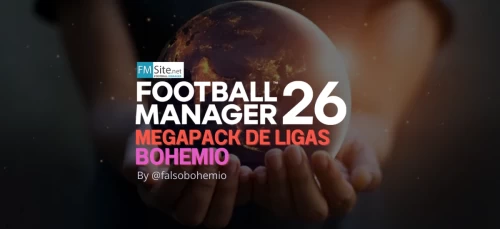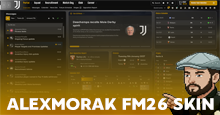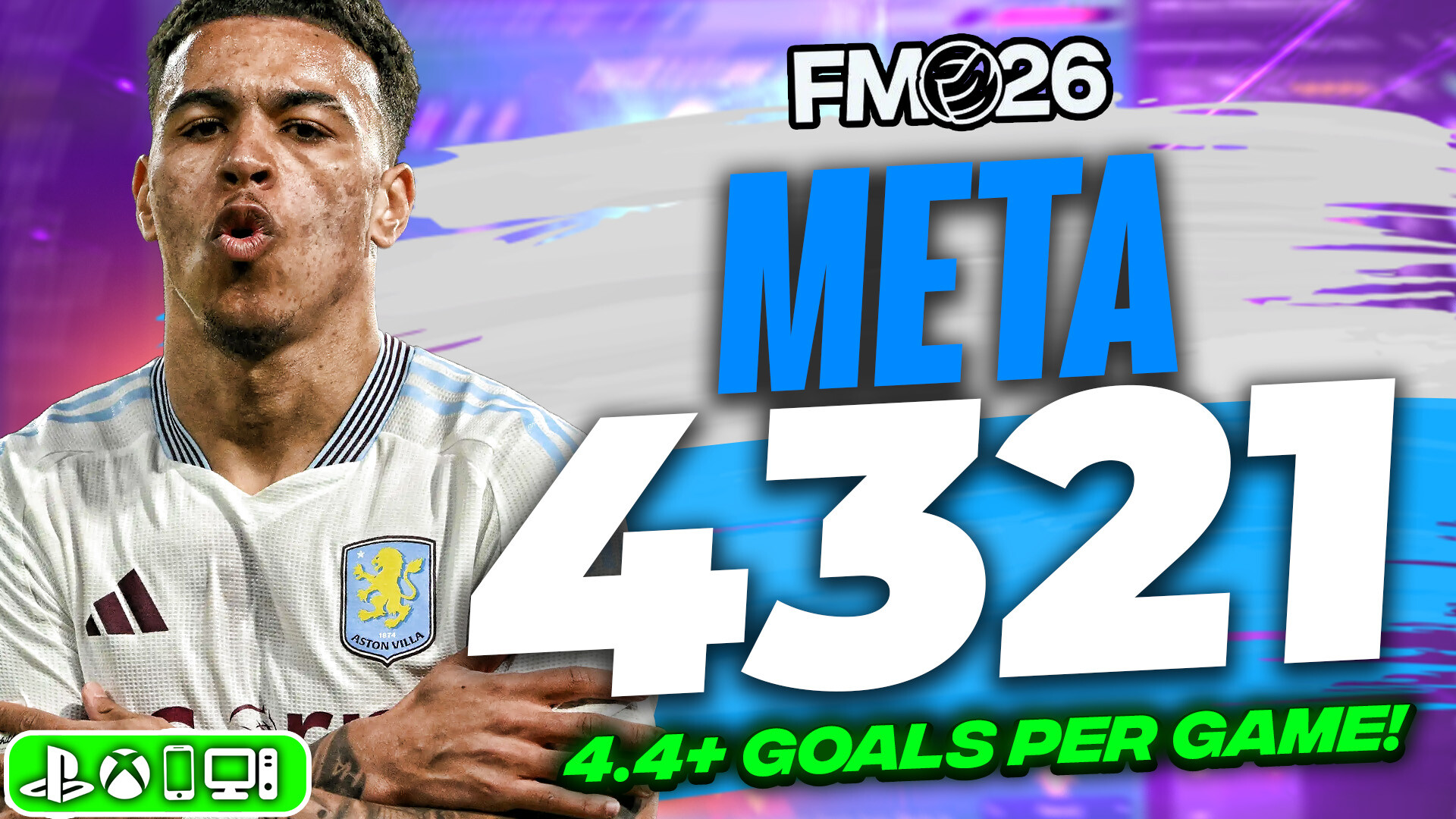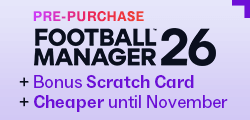
Contract Offer and Negotiation Tips
Before you can discuss contract terms, you need to agree a set of promises that will guide the player's career at the club. Broken promises can create unhappy players.
Agreeing on a level of Playing Time gives the player an idea of how often they are likely to feature.
In outlining Playing Time, you're informing the player of how you intend to use him this season. The status afforded to him will underline his importance to the team and how often he can expect to feature.
Future Playing Time informs the player of your long-term development pathway for him. By setting the course for the seasons to come, you're able to establish a clear vision for how you intend to use him in the seasons to come.
If you want to come to an agreement on a contract, there has to be an element of give-and-take with those on the other side of the table. If they're not happy, the deal won't happen, so always keep that in mind.
The fundamental elements of a contract offer indicate the player's status within the squad - i.e. how much he'll play - as well as the type and length of contract, and when it will start. These are the foundations upon which the deal will be built.
A player's wage often is comparable with his playing time; to offer him more money is to offer him a more important place in the squad. Any deal can be sweetened with a bigger Signing On or Agent Fee; all three commitments affect current and future budget costs.
You may adjust your budget for more flexibility when negotiating wages or signing on fees.
The board will allow you to change your budget provided they are in a healthy financial position. You can target your budget more towards either wages or transfers depending on what kind of approach you want to take to recruitment.
You can really convince a player on a contract offer by showing him what he could potentially earn in the form of bonus payments. Some, like Appearance Fees, are easier to trigger than others. Clauses help to protect interests on both sides; give-and-take is required here too.
You can use bonuses and clauses to help come to an agreement on contract terms. From stat-based incentives to contract-breaking clauses, you can structure a deal in whatever way you choose.
Elements of a deal can be deemed non-negotiable and 'locked' into place, excluded entirely, or can be semi-negotiable, where you stress their importance but might agree to a change if another part of the deal becomes more favourable to you.
Contract negotiations require some back and forth; you'll rarely be able to come to an agreement at the first time of asking. If you're not satisfied, you can walk away from discussions, otherwise try to come to an agreement now, however long it takes.
The process is the same for dealing with contract offers for potential new signings as well as contract renewals for members of your squad. You can either assume responsibility for those, or you can arrange for them to be delegated accordingly.
Staff Contract Negotiation Tips
Negotiating contracts with non-playing staff is fairly similar to agreeing terms with players, but there are some important differences.
If you want to agree a deal, there has to be an element of give-and-take with the other party. If they're unhappy, the deal won't happen, so always keep that in mind. They'll usually begin by outlining their expectations for the talks.
It's important to understand whether you're offering a full-time or a part-time contract. Most of the time this will be determined by the club's professional status, but it's worth keeping in mind nevertheless.
This is the primary job the member of staff will be performing. Try to be aware of the number of people already employed in this position; the board may restrict how many of each type you can have.
If all the available staff roles are filled, you have the option of discussing the matter with the board, in hope of expanding the size of the backroom team.
Some clubs want or need staff to perform multiple job roles at the same time. If you haven't got the budget to have someone different in each job, it can help to have one person double up. Workloads will be balanced accordingly.
Remember, we keep track of how adept each staff member is at performing different jobs, so it's quick and easy to identify those who are able to move around different disciplines in the backroom team.
Contracts have to have a start date and end date; the start date will usually be immediate, but you have the option to delay until the end of the season. Longer deals provide more individual security but are more of a commitment for the club.
Just like players, the wage paid to the member of staff is commensurate with their importance to the team and their experience to date. To offer more money is to recognise the quality and integrity of their work.
For non-players, bonuses mostly come in the form of the club reaching certain competition milestones. Clauses deal with wage adjustments in good times and bad, or whether compensation should be paid if a job offer comes in.
Certain bonuses and clauses may be inserted to either sweeten or protect the deal for either party.
Each part of a contract offer can be deemed non-negotiable and 'locked' into place (or excluded entirely), or semi-negotiable, where you impress their importance but might agree to a change if another part of the deal becomes more favourable.
The entire deal can also be presented as Negotiable or Non-Negotiable if you want to take a hard-line approach. Not everyone will respond kindly to being given a 'take it or leave it' offer, however.
Contract negotiations swing back and forth; you'll rarely be able to come to an agreement immediately. If you're not satisfied, you can walk away from talks, but try to come to an agreement now, however long it takes.
Bear in mind you'll likely have to compromise on one or two things if you're determined to get your way on another aspect of the deal.
Tactic Creation Tips
To get started, a tactic has been provided for you. If you wish to start from scratch and make your own, that can be done later.
You should begin by picking your preferred tactical style as it provides the foundation for everything else you want to do tactically.
Now pick a formation. There are a host of different shapes to choose from at a later date but, for the time being, focus on one of these three.
The tactic you pick has an influence on the style of training your players take part in.
Every tactical style can be defined by an overall Mentality as well as the Team Instructions issued. This is just a starting point and can be changed as much as you wish.
Your Tactical Style takes shape through the Team Instructions you decide upon. You may tweak, add or remove these as you wish.
Intensity indicates how hard your players are asked to work, and subsequently how quickly they may tire when playing this tactic.
Your created tactic will become the primary trained tactic. This will be your club's tactical identity and will aid your Assistant in setting up weekly training schedules. You may also create two alternate tactics that will be trained for familiarity.
Tactics are broken down into three main areas. In Possession, In Transition, and Out of Possession.
Instructions used in Possession are for when your team have the ball. These will define how wide the team plays, how they approach attacking situations and what they're going to do in the final third approaching the goal.
In Transition defines situations where your players either lose possession or win it back, as well as when the goalkeeper has the ball.
During phases Out Of Possession, you need to set your defensive line's position as well as how aggressively you intend to mark, press and tackle the opposition to try to recover the ball.
The last thing you need to do is pick the starting line-up, or ask for assistance from a member of the coaching team.
When picking the starting line-up, you can ask for assistance from a member of the coaching team.
As well as Condition, it is also important to consider Match Sharpness when picking your team. Building up a player's Match Sharpness by playing them in matches will help them to perform at their best.
Each player within the starting eleven is assigned a role. These roles dictate the instructions given to the player within that position.
Make sure the role suits both the player and the tactic. We constantly monitor each player's suitability to a range of roles.
Roles, duties and instructions can be assigned to the position itself, or to a particular player, when they play in that position. The player's suitability for each role is an important indicator as to how well he will play there.
Team Fluidity reflects the shape and structure of the team based on the roles and duties selected. A set-up where defenders and midfielders are more likely to join the attack will be more fluid than one where players are instructed to stay back and maintain their shape.
The positions and roles assigned to your players will determine the team's fluidity and it is up to you to decide what kind of shape fits best with your chosen strategy.
Match Tips
Your tactical decisions will always elicit a reaction from the squad!
Pay attention to how your players are feeling to make sure you're well-informed before kick-off.
When you're finished with the pre-match briefing, the press team have today's official team sheet ready for you. They have also gathered some quick reactions from social media.
Your backroom team have spent a lot of time preparing for this match and have distilled all of the information into the most important things you need to know.
Key members of your support team will suggest appropriate changes to the current team line-up.
If the match demands a change of mentality or adjustments to the team's playing instructions, you might find some suggestions on the pre-match advice screen.
When you're done with pre-match advice, it's time to take one final look at your tactics and team selection before the match.
Pre-match teal talk is your last chance to let the players know what you expect of them before the match starts.
Choosing the right combination of words and using an appropriate gesture can have a big impact on how the players feel at kick-off, so make sure you're confident in your choices.
You can also speak directly to the major position groups to give them more focused instructions.
If there's a specific player you want to talk to one-on-one, there's time for that before kick-off too.
Once you've had your say, the reaction of each of the players will be clear.
Your assistant can take responsibility of issuing the team talk if you want to.
During the match, keep a close eye on how each player is performing, adjust their instructions accordingly, and don't be afraid to make changes if you need to.
Making quick changes couldn't be easier. Tell the players what you want them to do by changing up your tactics! More detailed changes to your tactics are possible as well.
You can also communicate with the players on the pitch by shouting.
The analysis team also compile an overview of stats as well as a list of notable events throughout the duration of the match.
Watch the match unfold your way. Find a view that's comfortable for you and choose just how much, or how little, extra content you want from the first minute to the final whistle.
Position the match feed camera to your favoured position, height and zoom to catch all the action!
Tweaks to your tactic and line-up during the match may be the difference between victory and defeat.
Half Time gives you the chance to digest the first half and make changes where needed.
If you're winning, it would be good to use the team talk to encourage the team to keep playing well. If you're drawing, I would suggest encouraging the players to go out there and take control of the match. If you're losing, make sure the players know they have to perform better if they want to win today.
Substitutions can be made at any time. Select the substitute you want to bring on then drag and drop his name on to the player you want to take off. The same method can move players around on the tactical pitch view.
Once you are happy, the changes can be confirmed.
Make sure you don't miss a thing by personalising how you want to watch match replays!
Staff Roles Tips
The level of ability of each member of staff is reflected by the star rating system.
The Technical Director affects the standard of coaching, the Head of Youth Development deals with youth coaching and recruitment, the Physios deals with physiotherapy and the scouts affect the number of scouting assignments and the quality of scout reports.
The coaching team is responsible for the day-to-day work with the players. Coaches can take a number of tasks off your hands if required, and each has specialist skills used on the training ground.
The Head of Youth Development is in charge of the club's youth teams and can be given the responsibility to manage the transfer activity of the younger teams, in addition to being in charge of bringing through the next generation.
The Technical Director oversees the recruitment team and is responsible for players coming and going at the club. The Data Analysts and Scouts work together to identify new talent, report on opposition teams, and provide information and knowledge to you on whatever you need.
The Technical Director looks after the hiring and firing of first-team staff, is keenly involved in coaching development, and works with those coaches to plan and set up training schedules.
The Technical Director also decides which players go on loan, where they go, and provides feedback on how they're doing while away from the club.
The Medical Team look after the fitness and wellbeing of the players. Doctors and Physios primarily work on injury rehabilitation, while Sports Scientists support their work by seeking to prevent injuries by using data to advise on best practices.
The board will always inform you if they think the size of your backroom team has become excessive, is too small, or is about right; you can either reduce it where necessary, or make a request to be allowed more staff.
You may formally request the board allow more freedom and fewer restrictions for your backroom team. You can also, if you wish, place adverts to fill any vacancies.
Data Hub Tips
Your analysts will compile information here to help better understand the underlying data from our performances.
The analysis team also produce data visualisations. There are a number of different visuals that can be provided, each comprising a part of the bigger picture of how we are actually performing.
There are a number of different data visualisations that can be provided, each comprising a part of the bigger picture of how we are actually performing.
New technology allows tracking player stats like Expected Assists (also just from open play), Expected Goals Prevented, Progressive Passes, Sprints, Pressures and Open Play Key Passes. Team metrics now feature Passes Completed/Against, non-penalty xG, Opponent Passes Per Defensive Action, Final Third Passes For/Against, and more.
The expanded visualisations provide more in-depth coverage and a detailed breakdown from your analysts, interpreting the data being presented.
If you're interested in keeping track of a visualisation, 'Pin' one of them to instruct the analysis team to save it in the Team Analytics area.
Once a dataviz has been 'pinned', you can view the updated data whenever [%person#2-you] like over in our Analytics area.
Pinned visualisations can also then be set as preferred, instructing the analysis team to prioritise those in their reports.
A star indicates that this is a preferred visualisation.
Your analysts can also provide Key Findings about our team. This is where they apply their skills to draw conclusions from the data about how we're playing.
You'll be able to see the last few reports and visuals from the analysis team.








Discussion: Football Manager Induction Hints & Tips
No comments have been posted yet..